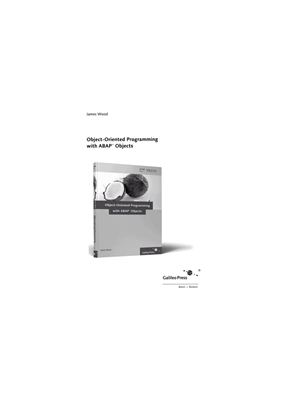Bonn - Boston: SAP Press; Galileo Press, 2009. - 357 p.
If you re an ABAP application developer with basic ABAP programming skills, this book will teach you how to think about writing ABAP software from an object-oriented (OO) point of view, and prepare you to work with many of the exciting ABAP-based technologies in ABAP Objects (release 7.0).
Using this comprehensive book as your guide, you can make the switch to object-oriented programming effectively, while bringing your skills up-to-date. You ll lea all essential OO concepts, and see examples from real-world projects. Object initialization, inheritance, polymorphism, exception handling, unit testing, and much more are demystified here, plus, you ll explore enhanced techniques and tools in ABAP
7.0. The book doesn't spend too much time teaching basic syntax, but rather concentrates on teaching object-oriented development this is your chance to successfully explore object-oriented programming with ABAP Objects.
As a bonus, at the end of each chapter, brief tutorials show you how to express your object-oriented designs using the Unified Modeling Language (UML).
If you re an ABAP application developer with basic ABAP programming skills, this book will teach you how to think about writing ABAP software from an object-oriented (OO) point of view, and prepare you to work with many of the exciting ABAP-based technologies in ABAP Objects (release 7.0).
Using this comprehensive book as your guide, you can make the switch to object-oriented programming effectively, while bringing your skills up-to-date. You ll lea all essential OO concepts, and see examples from real-world projects. Object initialization, inheritance, polymorphism, exception handling, unit testing, and much more are demystified here, plus, you ll explore enhanced techniques and tools in ABAP
7.0. The book doesn't spend too much time teaching basic syntax, but rather concentrates on teaching object-oriented development this is your chance to successfully explore object-oriented programming with ABAP Objects.
As a bonus, at the end of each chapter, brief tutorials show you how to express your object-oriented designs using the Unified Modeling Language (UML).

